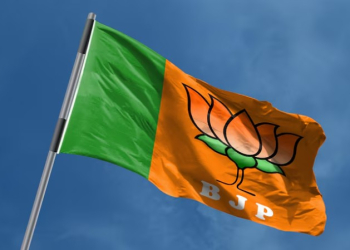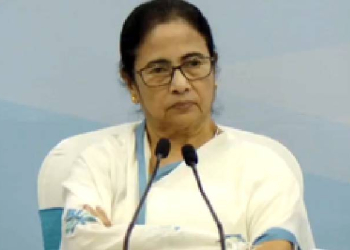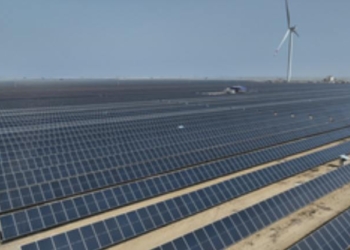New Delhi: The Modi government’s ‘White Paper on Indian Economy’, which was tabled by Finance Minister Nirmala Sitharaman in the Lok Sabha on Thursday, has “exposed” the “fiscal mismanagement” of the United Progressive Alliance (UPA) government, which was in power for 10 years from 2004 to 2014.
It also said that the UPA era was marred by “massive corruption”.
In the paper, the government criticised the UPA regime for the massive inflation between 2009 and 2014, saying that the government missed the golden opportunity offered by the years of high growth and investment.
The government’s White Paper also blamed the UPA for the banking crisis during its rule, calling it an infamous legacy of the UPA.
The White Paper further said that the UPA government turned a healthy economy stagnant.
The UPA undermined macroeconomic foundation and abandoned reforms in 2004, it said.
In the overview part of the White Paper document, it said, “In 2014, when we formed the government, the economy was in a fragile state; public finances were in bad shape; there was economic mismanagement and financial indiscipline, and there was widespread corruption. It was a crisis situation.”
Market borrowings were used unproductively during the UPA regime, said the White Paper.
The paper further said that “the responsibility to mend the economy step by step and to put the governance systems in order was enormous”.
“Our government refrained from bringing out a white paper on the poor state of affairs then. That would have given a negative narrative and shaken the confidence of all, including the investors. The need of the hour was to give hope to the people, to attract investments, both domestic and global, and to build support for the much-needed reforms,” said the White Paper.
The government believed in ‘nation first’ and not in scoring political points, it added.
“Now that we have stabilised the economy and set it on a recovery and growth path, it is necessary to place in the public domain the seemingly insurmountable challenges – left behind as a legacy by the UPA government,” said the White Paper.
“Every challenge of the pre-2014 era was overcome through our economic management and governance. These have placed the country on a resolute path of sustained high growth. This has been possible through our right policies, true intentions, and appropriate decisions,” it said.
The White Paper added, “The UPA government inherited a healthy economy ready for more reforms, but made it non-performing in its 10 years. In 2004, when the UPA government began its term, the economy was growing at 8 per cent (with industry and services sector growth above 7 per cent each and a resuscitating agriculture sector growth above 9 per cent in FY04) amid a benign world economic environment.”
The Economic Survey for 2003-04 noted, “The economy appears to be in a resilient mode in terms of growth, inflation, and balance of payments, a combination that offers large scope for consolidation of the growth momentum with continued macroeconomic stability.”
The White Paper said that the UPA leadership, which seldom fails to take credit for the 1991 reforms, abandoned them after coming to power in 2004.
Even as the country was standing at the cusp of emerging as a powerful economy, little was done by the UPA government to build upon the strong foundation laid by the previous NDA government, the paper added.
“In the years between 2004 and 2008, the economy grew fast, thanks to the lagged effects of the reforms of the NDA government and favourable global conditions. The UPA government took credit for the high growth, but did little to consolidate it,” said the paper, adding, “The failure to take advantage of the years of high growth to strengthen the budget position of the government and invest in infrastructure to boost future growth prospects stood exposed.
“As aptly put by a noted economist, ‘The high growth and low inflation of the first five years were due mainly to the global economic boom of 2002-07 and the wide-ranging, productivity-enhancing economic reforms carried out prior to 2004. The UPA government’s economic policies were mediocre to start with and worsened increasingly as the decade evolved’.
“Worse, the UPA government, in its quest to maintain high economic growth by any means after the global financial crisis of 2008, severely undermined the macroeconomic foundations. According to economic observers, the economy reeled under profound mismanagement and indifference.
“Fundamentally, the decade of the UPA government failed to undertake economic, social, and administrative reforms to strengthen India’s long-term economic potential, despite the golden opportunity offered by the years of high growth and investment.”
One such foundation that was severely weakened by the UPA government was price stability. Inflation raged between 2009 and 2014 as the common man bore the brunt. High fiscal deficits for six years between FY09 and FY14 heaped misery on ordinary and poorer households.
Over the five-year period from FY10 to FY14, the average annual inflation rate was in double digits. Between FY04 and FY14, average annual inflation in the economy was 8.2 per cent, the paper said.
BANKING CRISIS
The White Paper said, “The banking crisis in 2014 was massive, and the absolute sum at stake was too large. Gross advances by public sector banks were only Rs 6.6 lakh crore in March 2004. In March 2012, it was Rs 39.0 lakh crore. Further, not all problem loans were recognised.
“There was much under the hood. In 2018, in a written response to a Parliamentary panel, a former Governor of the Reserve Bank of India said, “A larger number of the bad loans originated in the period 2006-2008.”
(IANS)
















